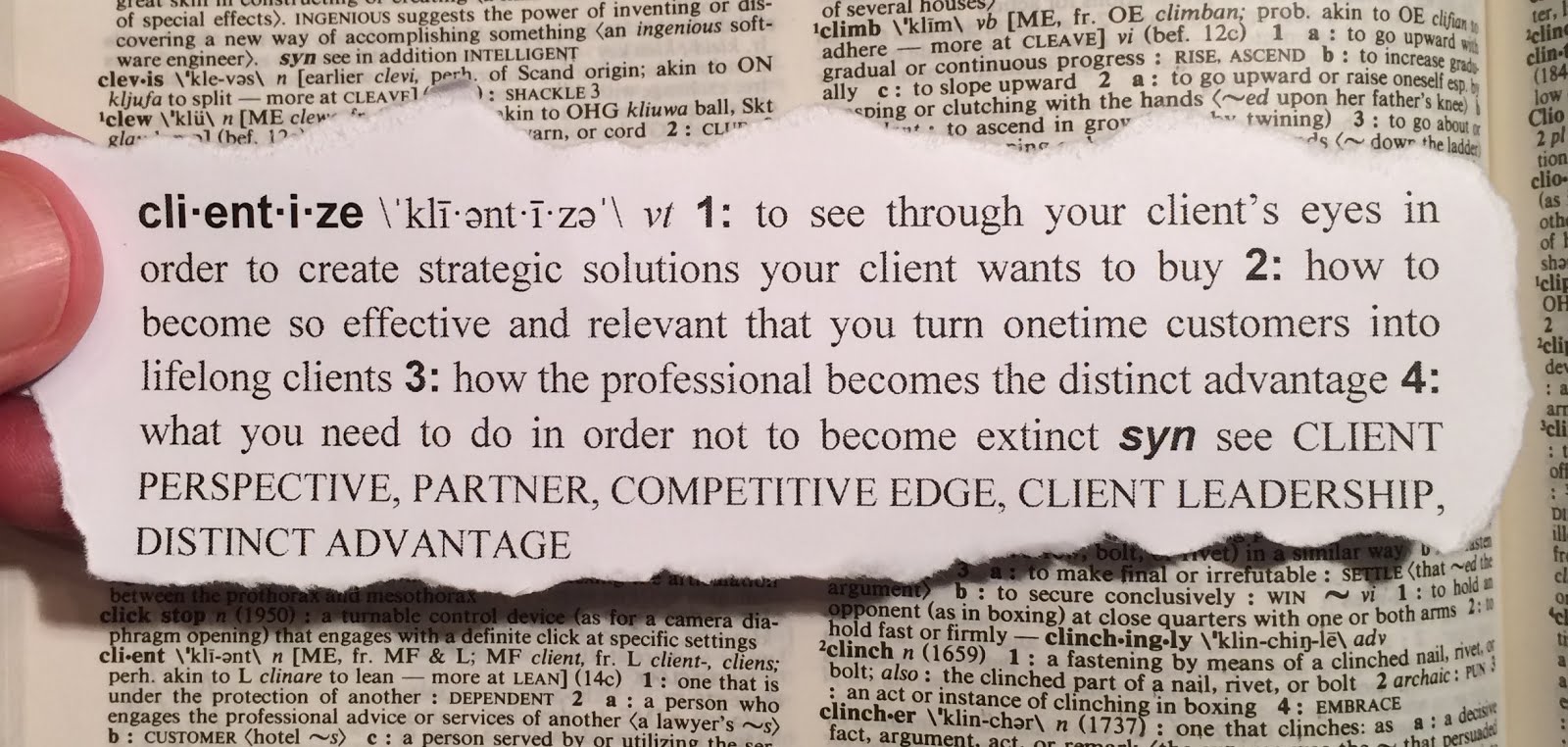The Story of John
John is assigned some tough accounts. He has emailed and called 10 people - and none of them are there. No one is answering the phone calls or emails.
He is distressed. It's now 10AM. He is thinking: "What's the use? People are so busy, how am I to get into see a prospect?"
He doesn't want to make anymore calls, so he pretends he has an appointment, and he leaves the office. What else is there to do?
I don't know where he goes but he comes back in the office later that day at 4PM, shuffles some papers on his desk. He talks to the people around him in the cubicles. Can't help but like John - he is jovial.
He leaves but is back in the office the next day. Similar routine to the day before.
The Story of Megan
Megan is John's competitor across town. She is in the office about 30 minutes earlier than John is.
She too makes 10 calls - no luck either. She too is distressed.
She thinks a little differently and she tries to figure out what to. She all of a sudden recalls something she read some where in a book that some managers have a tendency to come back to their offices around 11:30 to get somethings cleared off their desk before going to lunch.
She decides to give this a try.
So she prepares her list of prospects to call - it's now 9:30. She has two hours. She doesn't have an appointment for the morning, so she asks herself, "What's the best use of my time right now?"
She ponders the answer: I could go down and get a cup of coffee. I could go about calling more prospects - but that won't be fun. Or will it be fun?
She remembers what someone once told her - "Attitude is a state of mind that one chooses. And you can chose a positive or a negative state."
She thinks: "Let's make this fun. Let's see how many more calls and emails I can send out before 11:30AM." She creates a little contest with herself.
So she gets her list of prospects and calls. And sends emails.
She calls one prospect and he answers the phone. "Unbelievable, finally!" she thinks to herself.
She goes into the, "Can I have two minutes to explain who I am" speech? This client says "Sure." But then says "I am not really interested right now. Call back in a few weeks."
Megan, is a little discouraged and then she remembers: Attitude is a chosen state of mind.
She decides to "trick" herself to look for the good in the situation. She looks at what was accomplished: she got hold of someone! And looking at it from a positive perspective, she believes she should continue to call and email.
She gets two more "hits" - one is a full appointment with a prospect.
It's now 11:30. She goes through her list of prospects and sends the emails of introduction and makes phone calls up until 12 noon as she committed to herslf. Except at 12 noon, she decides to keep calling and emailing people.
She gets two more appointment. One person she called at 11:45AM and the last one was at 12:10PM.
Why did she not stop at 12 noon? She was preparing to stop at 12noon as everyone has probably gone to lunch. But before she stops, she recalls a client explain how often he misses lunch and just works at his desk during lunch most days.
So, she figures, "What the heck, I will give this a try." And she sticks around making calls during lunch time hoping to catch managers eating lunch at their desks.
The Difference Between the Megan and John
John is experienced. John used to do all the right things. He has just drifted into some bad habits. He has a hard time recovering from his pessimistic thought patterns.
Megan is processing her distress a little differently. She is incorporating new ideas to get around obstacles. She is not only persevering, she is incorporating different approaches to her routine. She is viewing her work from a perspective of a student and is detached from it being a personal problem.
John is on the border of making this personal and pervasive. He is using escapist actions to avoid the unpleasantness of the difficulties to getting appointments.
How to Become More Optimistic - Quickly
First, when your brain is getting wrapped up in taking something personally - stop the thought pattern. It's not personal. In the case of John - no one on the other end of the phone or email even knows John. How could it be personal then? It's not - unless you begin to think of it as a personal affront. Which is very easy to do.
Second, don't allow something to bleed into everything else. If you had a bad appointment - it doesn't mean your next appointment will be bad or the meeting with you boss later will also be bad. Look to see what happened: Was I unprepared? If so, next time I will be prepared. Was the client in a bad mood? Then this was the client's problem not yours. Don't allow it to become "Personal and Pervasive." Don't allow the feeling (or vibration) or "failure" to be picked up and carried to the next event.
Third - don't stew over things. The word is ruminate - to chew. We sometimes allow our mind to think about something negative. It then becomes "pervasive" in a larger way. The negatives start "piling on" like a football game, and we see things negatively - almost everything. The person who cuts us off, the rude waiter, our boss who cancels our appointment to catch up and so on. It becomes "me."
Last - look for the good. And then get into some positive action. Do something positive. Like in the example with Megan above, she made a game of calling prospects (how many can I call?). She did something toward her goal. She acted. The positive action stops the thinking, the pondering, the ruminating. This is very important. Note - it is positive action toward the goal. Not going for the beer at 5. Although, going to workout (not the beer) can be positive action, if you explain to yourself you will be back to do the positive action - and that you are using exercise to workout the stress.
To recap: Don't allow things to be personal. Know that this was only temporary (it was not forever and pervasive and always). Do look for the good. And act - do something positive to move you in the direction of your goals.
John is assigned some tough accounts. He has emailed and called 10 people - and none of them are there. No one is answering the phone calls or emails.
He is distressed. It's now 10AM. He is thinking: "What's the use? People are so busy, how am I to get into see a prospect?"
He doesn't want to make anymore calls, so he pretends he has an appointment, and he leaves the office. What else is there to do?
I don't know where he goes but he comes back in the office later that day at 4PM, shuffles some papers on his desk. He talks to the people around him in the cubicles. Can't help but like John - he is jovial.
He leaves but is back in the office the next day. Similar routine to the day before.
The Story of Megan
Megan is John's competitor across town. She is in the office about 30 minutes earlier than John is.
She too makes 10 calls - no luck either. She too is distressed.
She thinks a little differently and she tries to figure out what to. She all of a sudden recalls something she read some where in a book that some managers have a tendency to come back to their offices around 11:30 to get somethings cleared off their desk before going to lunch.
She decides to give this a try.
So she prepares her list of prospects to call - it's now 9:30. She has two hours. She doesn't have an appointment for the morning, so she asks herself, "What's the best use of my time right now?"
She ponders the answer: I could go down and get a cup of coffee. I could go about calling more prospects - but that won't be fun. Or will it be fun?
She remembers what someone once told her - "Attitude is a state of mind that one chooses. And you can chose a positive or a negative state."
She thinks: "Let's make this fun. Let's see how many more calls and emails I can send out before 11:30AM." She creates a little contest with herself.
So she gets her list of prospects and calls. And sends emails.
She calls one prospect and he answers the phone. "Unbelievable, finally!" she thinks to herself.
She goes into the, "Can I have two minutes to explain who I am" speech? This client says "Sure." But then says "I am not really interested right now. Call back in a few weeks."
Megan, is a little discouraged and then she remembers: Attitude is a chosen state of mind.
She decides to "trick" herself to look for the good in the situation. She looks at what was accomplished: she got hold of someone! And looking at it from a positive perspective, she believes she should continue to call and email.
She gets two more "hits" - one is a full appointment with a prospect.
It's now 11:30. She goes through her list of prospects and sends the emails of introduction and makes phone calls up until 12 noon as she committed to herslf. Except at 12 noon, she decides to keep calling and emailing people.
She gets two more appointment. One person she called at 11:45AM and the last one was at 12:10PM.
Why did she not stop at 12 noon? She was preparing to stop at 12noon as everyone has probably gone to lunch. But before she stops, she recalls a client explain how often he misses lunch and just works at his desk during lunch most days.
So, she figures, "What the heck, I will give this a try." And she sticks around making calls during lunch time hoping to catch managers eating lunch at their desks.
The Difference Between the Megan and John
John is experienced. John used to do all the right things. He has just drifted into some bad habits. He has a hard time recovering from his pessimistic thought patterns.
Megan is processing her distress a little differently. She is incorporating new ideas to get around obstacles. She is not only persevering, she is incorporating different approaches to her routine. She is viewing her work from a perspective of a student and is detached from it being a personal problem.
John is on the border of making this personal and pervasive. He is using escapist actions to avoid the unpleasantness of the difficulties to getting appointments.
How to Become More Optimistic - Quickly
First, when your brain is getting wrapped up in taking something personally - stop the thought pattern. It's not personal. In the case of John - no one on the other end of the phone or email even knows John. How could it be personal then? It's not - unless you begin to think of it as a personal affront. Which is very easy to do.
Second, don't allow something to bleed into everything else. If you had a bad appointment - it doesn't mean your next appointment will be bad or the meeting with you boss later will also be bad. Look to see what happened: Was I unprepared? If so, next time I will be prepared. Was the client in a bad mood? Then this was the client's problem not yours. Don't allow it to become "Personal and Pervasive." Don't allow the feeling (or vibration) or "failure" to be picked up and carried to the next event.
Third - don't stew over things. The word is ruminate - to chew. We sometimes allow our mind to think about something negative. It then becomes "pervasive" in a larger way. The negatives start "piling on" like a football game, and we see things negatively - almost everything. The person who cuts us off, the rude waiter, our boss who cancels our appointment to catch up and so on. It becomes "me."
Last - look for the good. And then get into some positive action. Do something positive. Like in the example with Megan above, she made a game of calling prospects (how many can I call?). She did something toward her goal. She acted. The positive action stops the thinking, the pondering, the ruminating. This is very important. Note - it is positive action toward the goal. Not going for the beer at 5. Although, going to workout (not the beer) can be positive action, if you explain to yourself you will be back to do the positive action - and that you are using exercise to workout the stress.
To recap: Don't allow things to be personal. Know that this was only temporary (it was not forever and pervasive and always). Do look for the good. And act - do something positive to move you in the direction of your goals.
















